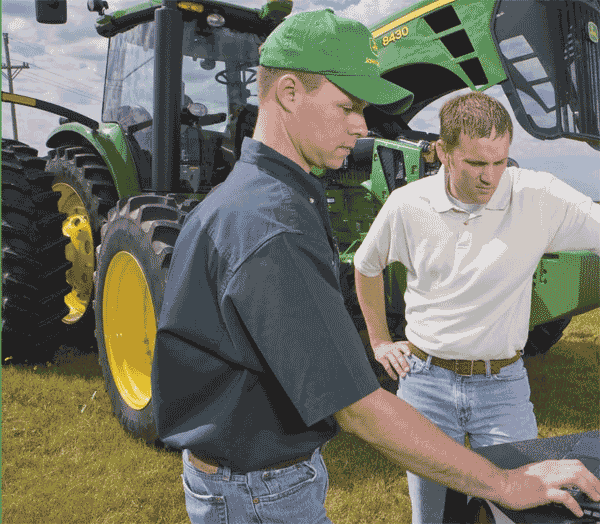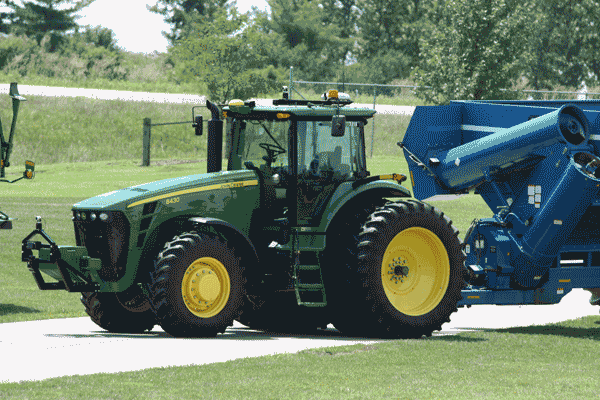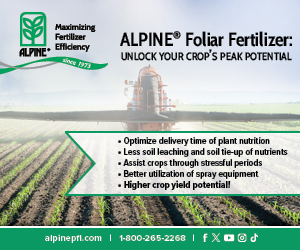Farming technology goes state-of-the-art
WHAT’S NEW AND WHAT’S NEXT IN FARM EQUIPMENT – ALTERNATIVE FUELS, AUTOMATION AND MUCH MORE
like technology in other sectors, agricultural technology is evolving fast. Cleaner-burning and more energy-efficient engines are on the way, as manufacturers go beyond Tier 4 US emissions standards. Farmers can also expect to see equipment made from lighter but strong-as-steel materials such as carbon fibre, which will further boost efficiency. Major tractor manufacturers are also working on engines that run on alternative fuels such as sugar cane ethanol and hydrogen.
Barry Nelson, media manager at John Deere, foresees higher horsepower engines, as well as more use of automation technology. “There will be ‘smart machines’ with wireless communication between pieces of equipment, allowing them to ‘talk’ to each other and to operate more efficiently,” he says, “more field functions will be done automatically and more accurately.” For example, the company’s ‘JD Link’ application allows a user in the farm office to access information on where tractors are located on the farm, their engine performance and more.
John Deere’s ‘Machine Communication Radio’ creates a wireless network to facilitate machine-to-machine communication between up to ten farm vehicles within a three-mile radius. With this system, the combine operator can send a ready-to-unload request, and the closest tractor/grain carts in the network can respond, maximizing efficiency of the harvesting fleet while reducing fuel consumption. Using John Deere’s ‘Machine Sync’ technology, a combine operator can also take over operation of the tractor and grain cart. “It synchronizes vehicle speeds and direction, so that you can harvest on the go, and ensures you fill the grain cart accurately with less stress on the tractor operator,” says Nelson.
Kinze Manufacturing’s ‘Autonomy Project’ also offers remote control of agricultural equipment. The first step involves the grower loading a GPS-based field map. Then, after the grower takes the tractor to the field and its position is indentified to the system, the software generates the most efficient method to plant the field, and positions the tractor and planter at a designated starting point. Grower intervention is required to manoeuvre around unplanned obstacles. In addition to planting, the system can be used for fertilizing, applying crop protection products and harvesting crops.
PHOTO 1: JDLINK FROM JOHN DEERE

alternative power
Agricultural equipment makers are also keenly investigating alternative fuels. “Several companies have developed concept tractors powered by hydrogen, natural gas and other potential bio-based fuels,” says Matt Rushing, AGCO’s director of product management for electronics and engines. “We’re also looking at potential dual-fuel engine concepts that combine ethanol or cellulosic ethanol with petroleum-based fuels, for example. There have also been concepts looking at the viability of liquid petroleum gas, which is a clean-burning alternative option.”
To equip farmers to be able to harvest cobs and stover for the production of cellulosic ethanol, AGCO and Vermeer are among several companies that have developed one-pass systems which bale these materials as they leave the combine. Others such as Case IH are developing second-pass balers. Here in Ontario, Greenfield Ethanol has a goal of building a commercial cellulosic ethanol plant within the next three years. At its pilot plant in Chatham, the company makes the fuel from cobs, stover and other biomass feedstocks such as wood. They get most of their cobs from seed manufacturers, and some cobs and stover from farmers, says business development manager Mark Schwartz.
AGCO is also developing concept electric drives and hybrid drives. “We’re studying electric-drive systems as a replacement for hydrostatic wheel motors,” says Rushing, “such as the AGCO E-Gator Applicator concept shown at AGCONNECT in 2010.” Initial tests show that using electric wheel motors delivers higher torque, stronger pulling force, more horsepower and better fuel efficiency.
PHOTO 2: THE KINZE AUTONOMY PROJECT UTILIZES AUTONOMOUS AGRICULTURAL EQUIPMENT TO COMPLETE MANY TASKS ON THE FARM WITH MINIMAL DIRECT HUMAN INPUT.

evolving relationships
Rushing notes that it’s not just the technology on the farm that’s evolving – it’s also the grower’s relationship to technology. “In the past, sales discussions with farmers revolved around the capabilities of the basic mechanical attributes of the machine, and now farmers are also looking to manufacturers for agronomic support and advice as it relates to the machine’s application,” he says. “Rather than knowing the performance characteristics of the equipment, they also want to know how specific technologies can improve their farm’s bottom line.” He foresees that this will involve the creation of better interfaces. “I think farming will become more of an experience,” he says. “Things will be designed so that in your chemical applicator for example, you’ll be presented with new, intuitive operator interfaces looking at application rates and coverage maps from previous years on that particular field and you’ll be able to see how much you can improve performance today using improved precision ag technologies – like it’s an engaging competition to outperform previous years or operations, not just mundane work.” •

















